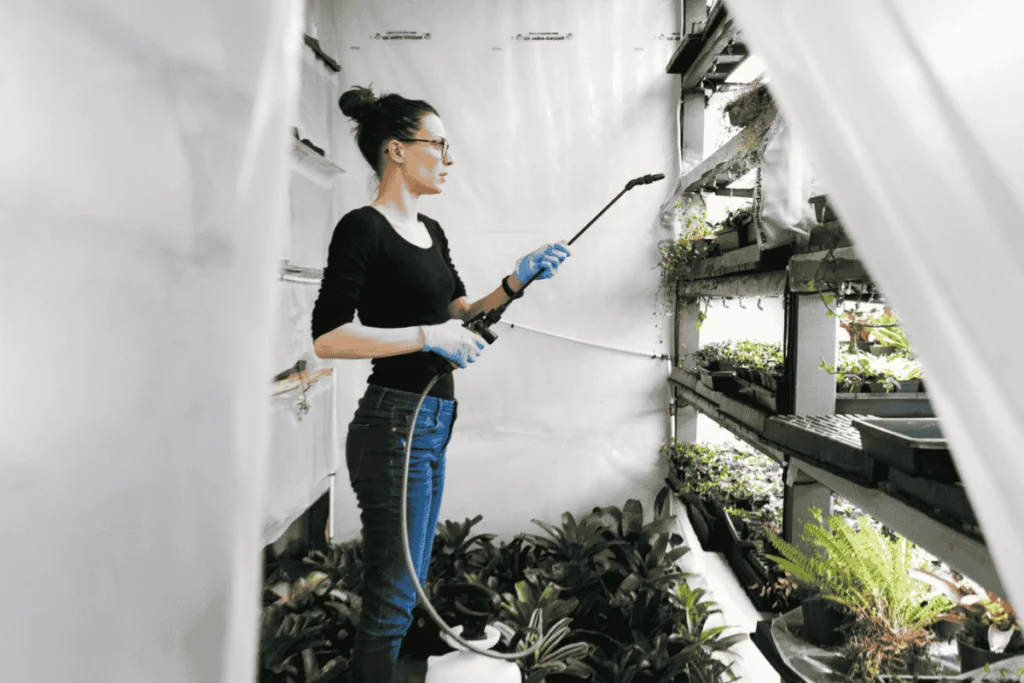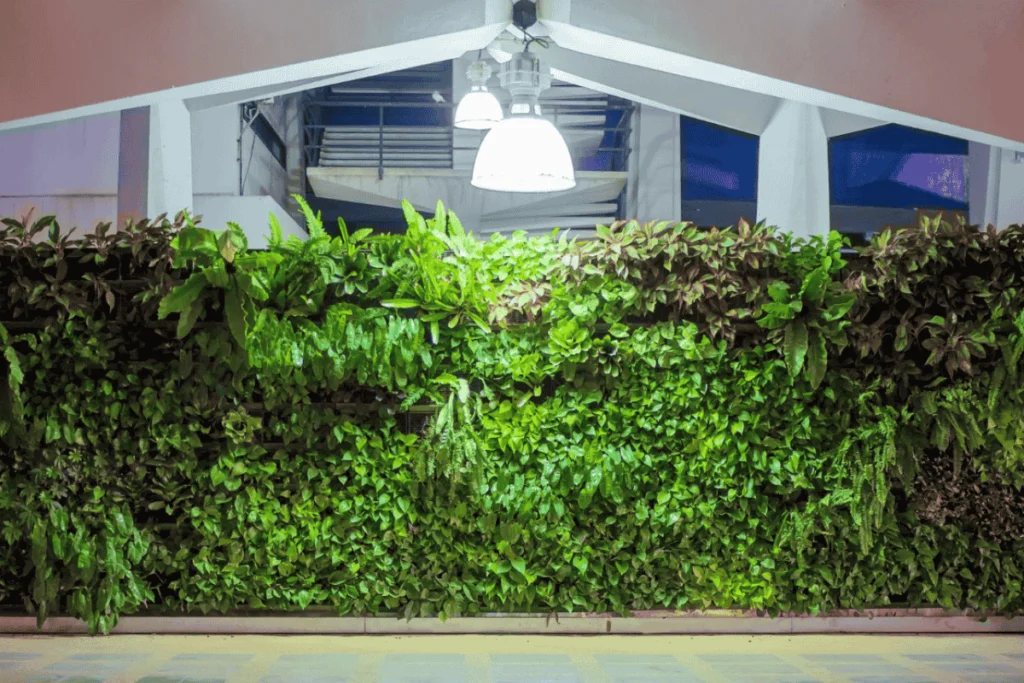Learn the top mistakes people make when creating vertical gardens and how to avoid them. Follow these practical tips to ensure your garden thrives, even in small spaces.
Creating a vertical garden is a fantastic way to maximize green spaces in compact areas, but success requires more than just planting. Avoiding common mistakes in vertical gardens is crucial to ensure that your vertical garden grows healthily and looks aesthetically pleasing.
By following the correct planting and care tips, you’ll be able to enjoy a green space without the setbacks caused by common errors.
Why Avoiding Mistakes in Vertical Gardening Matters
Vertical gardens are not only a visual delight but also a step toward sustainability and wellness. However, issues like poor drainage, overcrowding, or selecting unsuitable plants can lead to frustration and wasted resources. By addressing these common challenges, you can enjoy a lush and long-lasting garden that fits perfectly into your space.
🎥 Watch this video: “Common Mistakes to Avoid in Vertical Gardening for Novices”
This video highlights practical solutions to some of the most frequent issues faced by vertical gardeners.
1. Choosing the Wrong Plants
🌱 Are your plants struggling to grow? You might have chosen the wrong ones!
One of the most common mistakes in vertical gardens is selecting plants that are too large, heavy, or incompatible with the environmental conditions.
✅ How to Avoid It:
- Choose lightweight plants like herbs, succulents, and small leafy greens.
- Match your plants with the available light, humidity, and climate in your space.
- Group plants with similar watering and nutrient needs for easier care.
📌 Check out guide on the best plants for vertical gardens to find the perfect match!
2. Skipping Proper Drainage
🚱 Do your plants look unhealthy or waterlogged? Poor drainage might be the culprit!
Neglecting drainage is one of the most frequent mistakes that can cause waterlogging, root rot, and plant death.
✅ How to Fix It:
- Use planters with drainage holes or waterproof liners.
- Add gravel, sand, or perlite to improve drainage efficiency.
- Use drip trays to collect excess water and prevent wall or floor damage.
💡 Many common mistakes in vertical gardens stem from improper drainage. Ensuring proper water flow will keep your plants healthy and thriving!
3. Overwatering or Underwatering

💧 Are your plants wilting or turning yellow? You might be watering them incorrectly!
Overwatering and underwatering are two of the most common mistakes in vertical gardens, leading to stressed, unhealthy plants.
✅ How to Maintain Proper Watering:
- Check soil moisture by inserting your finger into the soil before watering.
- Install a drip irrigation system for consistent hydration.
- Group plants by their water requirements to simplify maintenance.
📌 Learn how to balance watering to prevent common vertical garden issues!
4. Using Weak Structures
🏗️ Is your vertical garden leaning or collapsing? Your support structure might not be strong enough!
A common mistake in vertical gardens is building on a weak structure that cannot handle the weight of soil, plants, and water.
✅ How to Strengthen Your Structure:
- Use sturdy materials like treated wood, metal, or reinforced frames.
- Secure vertical frames with heavy-duty wall anchors for stability.
- Distribute weight evenly and leave enough space for air circulation.
📌 By avoiding these structural mistakes, you’ll keep your vertical garden secure and long-lasting!
5. Inadequate Lighting

☀️ Are your plants growing slowly or becoming weak? They might not be getting enough light!
Another common mistake in vertical gardens is placing them in areas with too much or too little light, affecting plant health.
✅ How to Optimize Lighting:
- Assess your location’s natural light exposure before choosing plants.
- Use full-spectrum LED grow lights for indoor gardens.
- Periodically rotate plants to ensure they receive even light distribution.
💡 Good lighting prevents common mistakes in vertical gardens and ensures your plants flourish year-round!
6. Poor Soil Quality
🌱 Are your plants not thriving as expected? The issue might be your soil!
Another common mistake in vertical gardens is using soil that is too heavy, lacks essential nutrients, or doesn’t retain moisture effectively, which can hinder plant growth.
✅ How to Improve Soil Quality:
- Choose a lightweight potting mix rich in organic matter to support plant health.
- Add compost or organic fertilizers to enhance soil fertility and structure.
- Refresh or replace the soil annually to ensure consistent nutrient availability.
💡 High-quality soil is the foundation of a thriving vertical garden, helping your plants grow stronger and healthier!
7. Overcrowding Plants
🌿 Are your plants competing for light and nutrients? They might be overcrowded!
Overcrowding is a frequent mistake in vertical gardens that can lead to poor airflow, nutrient competition, and stunted growth.
✅ How to Avoid Overcrowding:
- Leave adequate space between plants to allow for proper growth and airflow.
- Prune regularly to prevent overgrowth and maintain healthy plant spacing.
- Arrange cascading plants on top rows and compact ones below for better balance.
💡 Thoughtful spacing and pruning will prevent overcrowding, ensuring each plant receives enough light, air, and nutrients!
8. Neglecting Fertilization
🌾 Are your plants looking dull or growing slowly? They might need more nutrients!
A common error in vertical gardening is overlooking the importance of regular fertilization, leading to nutrient deficiencies and poor plant performance.
✅ How to Maintain Proper Fertilization:
- Apply slow-release or liquid fertilizers every 4–6 weeks, depending on plant needs.
- Observe your plants for signs of deficiencies, such as yellowing leaves, and act accordingly.
- Avoid over-fertilizing, which can harm roots and degrade soil quality over time.
💡 Regular fertilization provides essential nutrients for vigorous growth and a flourishing vertical garden!
9. Overlooking Pest and Disease Control
🐛 Are pests or diseases damaging your plants? Early intervention is key!
Neglecting pest and disease control is a frequent oversight that can quickly harm your vertical garden, spreading damage if not addressed promptly.
✅ How to Protect Against Pests and Diseases:
- Inspect your plants weekly for signs of pests, mold, or discoloration.
- Remove infected leaves and treat plants with natural remedies like neem oil or soapy water sprays.
- Incorporate companion plants, such as marigolds or basil, to repel pests naturally.
💡 Proactive pest and disease management keeps your garden healthy and prevents damage from escalating!
10. Poor Design and Accessibility
📐 Is your garden hard to maintain or not functional? Design might be the issue!
Poor planning in garden layout and accessibility can make maintenance tasks, like watering and pruning, unnecessarily difficult, reducing the garden’s overall success.
✅ How to Design for Accessibility:
- Plan your garden layout to ensure easy access to all plants for care and maintenance.
- Use modular systems that allow adjustments as plants grow or needs change.
- Consider plant growth habits such as climbing or bushy types when designing your vertical garden.
💡 A well-designed and accessible garden ensures convenience, making it easier to keep your space lush and vibrant!
FAQs About Vertical Gardening
Q1: What are the easiest plants to grow in vertical gardens?
Herbs like basil, mint, and parsley, as well as small greens like lettuce and spinach, are beginner-friendly.
Q2: How often should I water my vertical garden?
It depends on the plant species and climate. Monitor soil moisture frequently and water when the top layer feels dry.
Q3: Can I grow fruits in a vertical garden?
Yes! Strawberries, cherry tomatoes, and dwarf citrus trees are excellent choices for vertical gardening.
Q4: How do I prevent my vertical garden from damaging walls?
Use waterproof liners or back panels to protect walls from moisture. Ensure proper drainage to avoid water leakage.
Final Thoughts:
By identifying and fixing these common mistakes in vertical gardens, you can create a lush, healthy environment in your home or outdoor space. Whether you’re a beginner or an experienced gardener, following these practical solutions will help your plants thrive.
🌿 Ready to start? Explore our complete beginner’s guide to vertical gardening for more inspiration and ideas.

